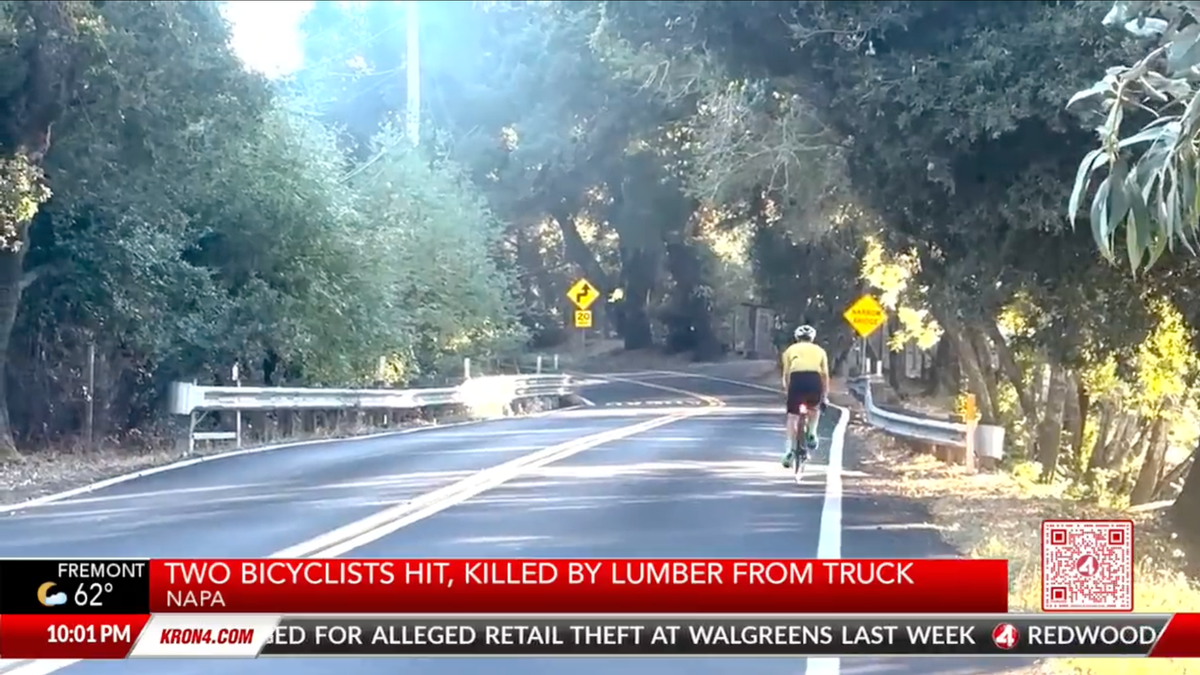Two cyclists died near Napa, California, Tuesday by a lumber truck when its load suddenly shifted of the picturesque roadway.
Authorities say the victims, identified as Christian and Michelle Deaton, were legally riding north on the valley’s winding, two-lane Silverado Trail when they encountered a flatbed truck headed in the opposite direction. Somehow, the lumber it was carrying shifted and fell, hitting the cyclists, Fox 8 reports.
Exactly what caused the load to hit the Deatons when it did is still being investigated, but Christian was declared dead at the scene. Michelle, meanwhile, was taken to a nearby hospital where she later died from her injuries. According to the sheriff’s office, they were visiting the Napa Valley from Portland, Oregon. And to his credit, the truck driver stayed at the scene and reportedly cooperated with authorities who are still investigating what caused the load to shift and hit the cyclists.
read more: https://jalopnik.com/two-cyclists-killed-by-trucks-lumber-load-in-california-1850954500
archive link: https://archive.ph/ZJb0f



The majority of the fuck cars crowd doesn’t want to ban all personal motor vehicles. We want our streets to be pleasant to live and walk around, and car-centric urban planning is incompatible with that.
As for the deliveries of commercial goods, you only need to look at how it is achieved today in cities that are designed around people instead of cars. If you live in North America you may be picturing your shopping as a weekend highway trip to a big box store with a massive ground-level parking. Such large stores practically require large semi trucks to bring goods in.
A different way of doing things is possible, and indeed not only it was done that better way in North America before the popularity of the car, but is still done that way in most places around the world.
Instead of hopping in your car once a week, you walk or use other means of transportation on your way home from work. Yes, walking is fine because your destination isn’t far away any more: mixed-use buildings mean that you live not far from where you shop. Shops are smaller and they are not surrounded by an ugly sea of car parking – it isn’t needed when people arrive to the shop by foot.
“But what about bringing goods into the shop?”, you say. “Don’t you need trucks for that?”. Yes, small ones, not semi trucks. Remember: it is not a huge big box store by the highway. It’s a neighborhood grocery shop, or furniture shop, or whatever else it is that you are buying.
Small delivery vans and trucks are all that is required. And often times, they are only allowed to deliver within certain hours of the day to reduce the amount of disturbance to the neighbors, who want to enjoy their streets with as little motor vehicle traffic as possible.
This isn’t some new experimental idea. It’s how it already works in most of the developed world.
@frostbiker @Treczoks
I’ve got a local grocery/corner store (long shelf life but also milk and eggs) that is a Amazon delivery point and I don’t know there’s a size limit but it essentially turns the corner store to a big box store all without a 18-wheeler coming down the street. It would be nice to have competition with Amazon, that the same corner store could provide the same last mile service to a myriad of retailers, it wouldn’t take much a infrastructure investment for that transition.